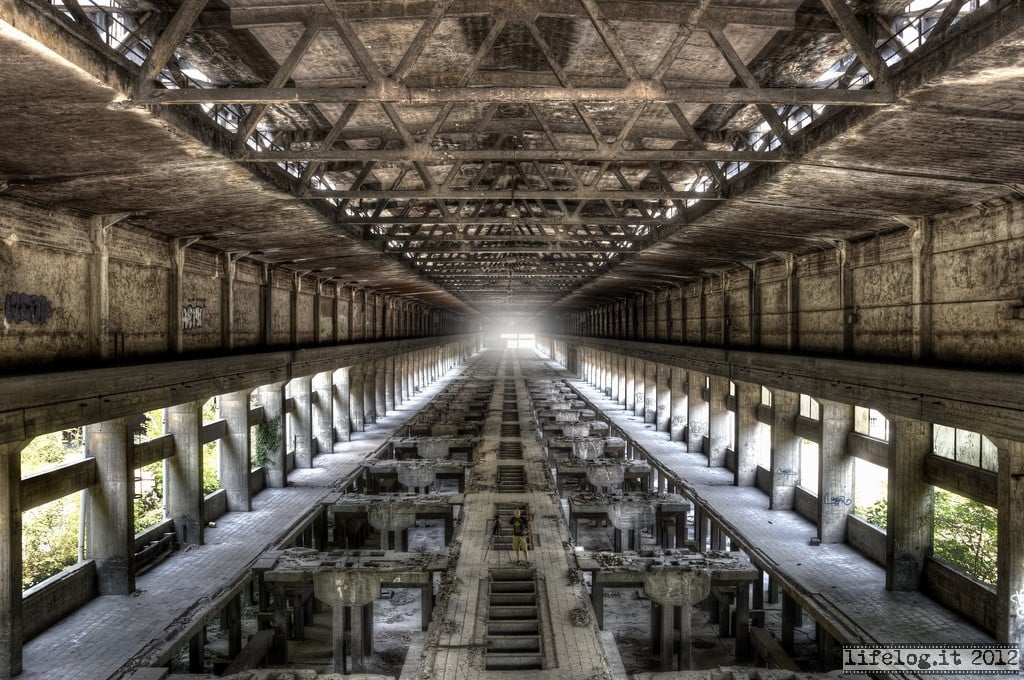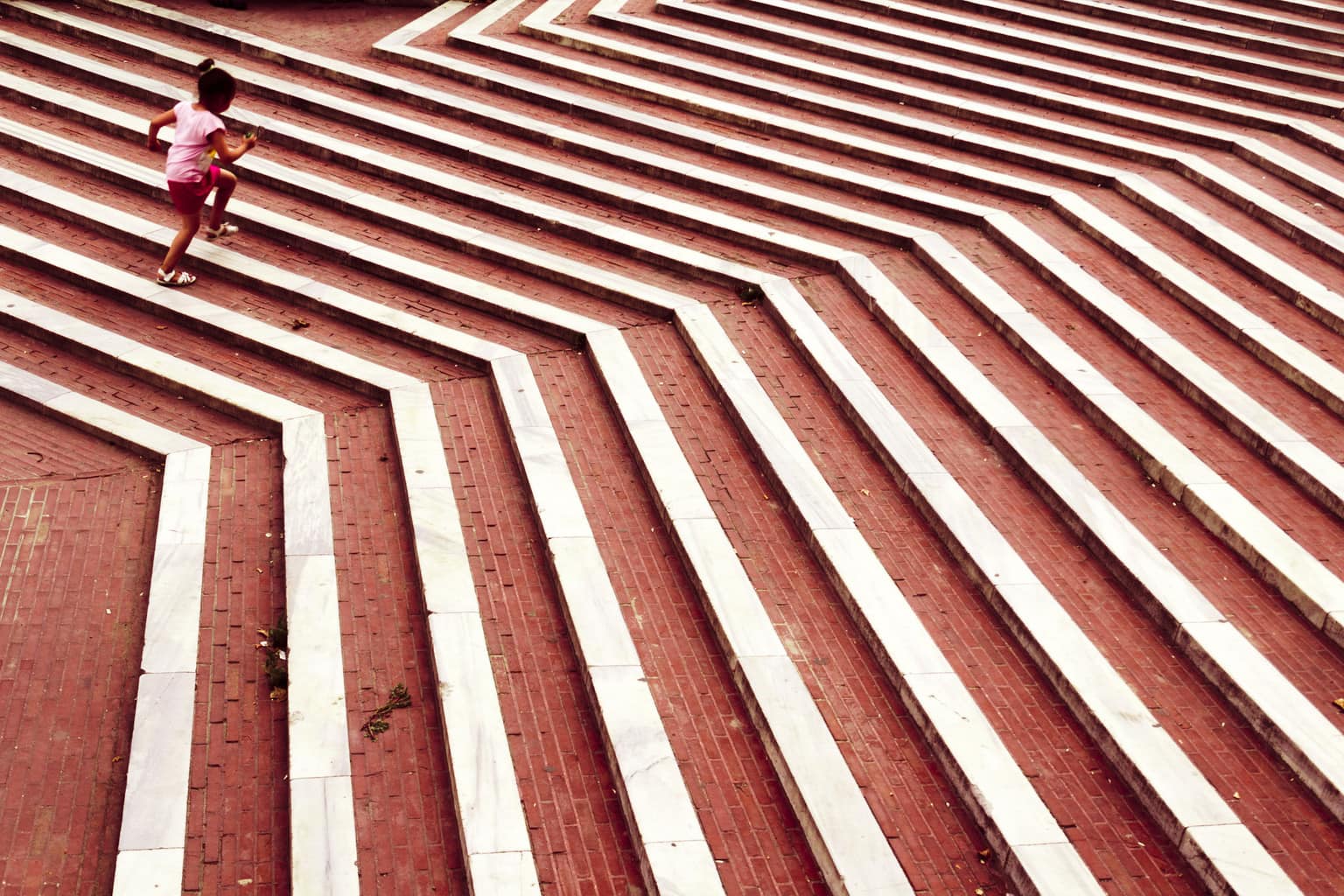The order in photography is like the order and decoration of any home. There are minimalist homes, where everything occupies a place and only that place, where everything fits and there is air everywhere. There are baroque ones loaded with elements everywhere. There are more intermediate ones. Some of us defend order within disorder against the current, because we understand a desk full of reference books, colored post-its stuck to the computer screen, to the lamp or between the pages of half-consulted books (speaking of post-its). it… have you seen what can be done with them?). And despite that, we navigate in an orderly manner in our minds, and we find everything... Until someone decides to tidy up our desks, and there are those who need to see and feel the space around them with a lot of air in between ?

Whether you're a minimalist or browsing stacks of books, you can find and create order in almost any setting. It all depends on the organization of the elements within the frame. That is to say, the way in which you place the elements so that whoever looks at the image is able to follow the information, the message, without getting lost along the way. In other words, everything depends on the composition or organization of elements in the shot so that the viewer reaches the center of interest of the image following the path that we have previously traced for him.
Today we will focus on the order, but I recommend you go deeper into the photographic composition with this mega guide with all the tips and tricks for some of the most impressive photographs .
HOW DO WE ORDER A COMPOSITION?
As always, and luckily, there are no rules or rigid compositions, but there are a few tips or tricks that will help you make the compositions more natural and at the same time more interesting for the viewer.
WESTERN READING
If you follow this blog, I imagine that, although you may know other languages with different orientations in literacy, the Western one is surely your usual way of reading. And you will say, and what does that matter? Well, in photography a lot ? . Through years and years of analyzing text and images, our brains naturally process them from left to right and top to bottom .
Whether we want a comfortable and natural reading of the image or not, we must take into account that this is the way in which we are unconsciously going to read the image, stopping from time to time in some strong points of the image (remember the importance from the Rule of Thirds in composition , right?). Placing the center of interest in one of these points makes the gaze stop there naturally, and not get lost in the image.

THE LINES
Another way to help us order the images is the use of lines in our compositions. The lines , whether real or imaginary, guide the gaze within the frame as if it were an arrow. They are also capable of providing dynamism, strength, sensuality, calm, volume or depth among many other characteristics, always depending on their shape.
All the objects that appear in your frame contain lines, so it is important to locate them and use them to attract the eye in an orderly manner towards the center of interest and not distract it. The dominant lines are the ones that stand out the most in the scene and to which more attention must be paid. In summary we have the following types of lines:
- Horizontal lines : The most common is the horizon line. Horizontal lines bring us peace and tranquility and it is the one that is most natural to us.
- Vertical lines : Provide strength, rigidity and height.
- Diagonal lines : They are vigorous, have a lot of visual force and tension, since they do not usually appear in a common way in the natural environment.
- Curved lines : They are more sensual, soft and elegant, and we associate them with movement (rivers or winding paths, etc.)
- Pattern repetition : Rhythm usually creates a sense of order. You can play with rhythmic patterns to help you highlight the center of interest (by contrast, or breaking the rhythm) Or your rhythmic pattern can be the very reason for the image.
VISUAL WEIGHT AND BALANCE
Another way closely linked to the order in composition is what we know as visual weight, which is the degree of attraction of the elements that appear in the scene. The visual weight of each of these elements is determined by many variables. Color, size, shape, contrast, texture, brightness and a long etcetera. Weight directly conditions the way we look at the scene . As much as we want to draw our eyes to a little ant perfectly located at some point of the rule of thirds within the frame, if it has an elephant next to it, it will hardly work for us to play with the lines or another technique ?
The way in which we play with visual weights, whether they are compensated or not (balanced), inevitably guides our gaze depending on whether they weigh more or less, whether they are placed somewhere in the frame with a strong point or not, etc. .

MOTION
The movement of the objects that appear in the scene, be it literal or simply the idea of it (for example, marked by the directionality of an object that appears static but to which we associate an intrinsic movement), also marks the way in which we read the image and the order in which we perceive the elements.
In the following image, although the movement is "frozen" due to the speed used at the time of taking the photograph, we continue to perceive it thanks to the action and pose of the girl, which suggests that she is running up the stairs, and invites us to follow the direction of his movement.

WHAT DO I DO IF I HAVE ELEMENTS LEFT OVER IN THE FRAME?
Many times, no matter how much we know the concepts of lines, visual weights, etc. within the frame, reality surpasses us and we come across images that we are unable to order.
The best thing in those cases is to try to isolate our center of interest. There are several ways to do it. It depends on you or the situation, which one you want to use ?
Open the diaphragm : We have already discussed the direct association between diaphragm and depth of field.
Long focal lengths : Telephoto lenses flatten the image and considerably reduce the depth of field, just as we do when we play with the aperture.
Change the framing...: Many times the disorder is solved simply by giving it another twist and changing the framing or perspective.
And / or change the background : If there are too many distracting elements, look for neutral or smooth backgrounds or with rhythmic patterns or lines that can help you highlight your center of interest.
Fill the frame : Do not be afraid to cut your losses when the situation requires it ?
I already commented at the beginning of this article that each one of us has our idea of order, although I would say that we all agree that order has to make us capable of finding things, right? It does not matter if you are looking for a pen on a desk or a look in a portrait. The important thing is that you always make it clear what the center of interest is and how to get there . When we compose and order an image, what we are really doing is drawing a map indicating the path that leads to that treasure that we ourselves have hidden. That treasure is called the center of interest. The path is called composition and order of the elements ?
I hope this article has been useful to you. If so, please share it with whoever you think might be interested. Thank you very much and until next time ?


